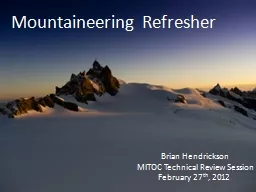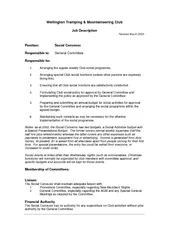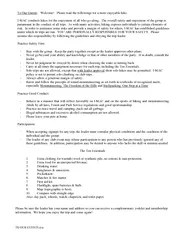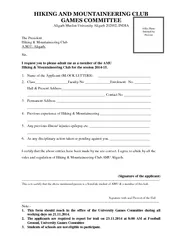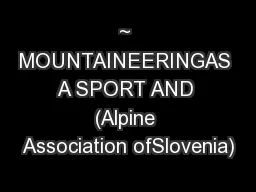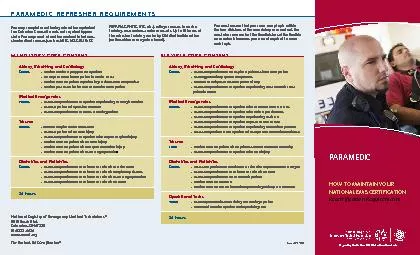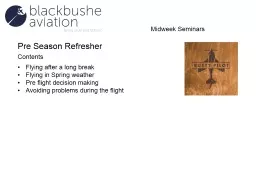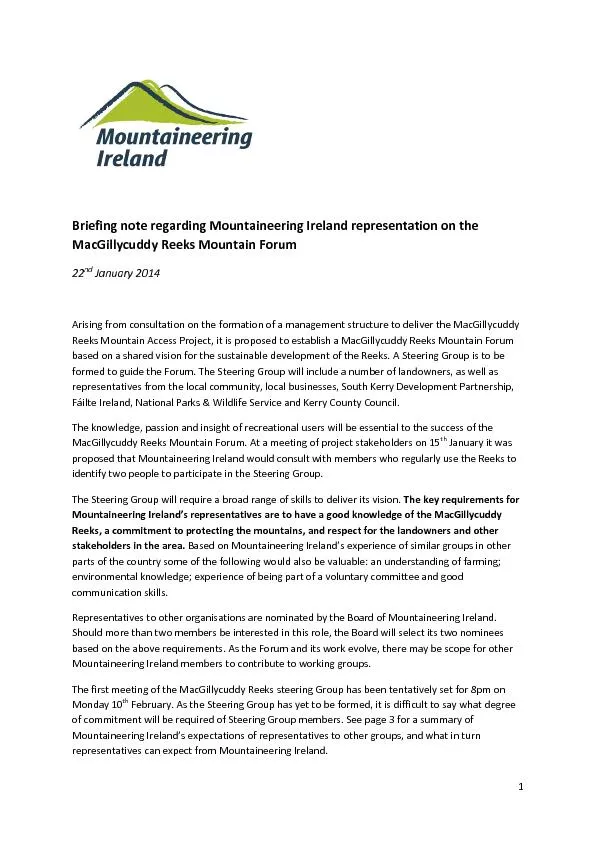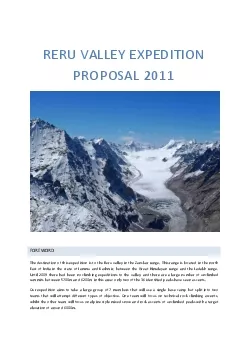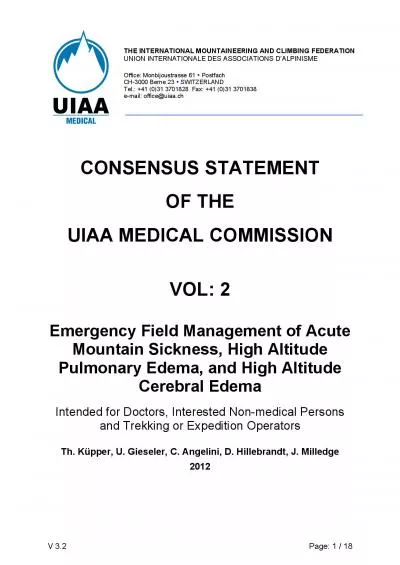PPT-Mountaineering Refresher
Author : conchita-marotz | Published Date : 2018-02-16
Brian Hendrickson MITOC Technical Review Session February 27 th 2012 A very incomplete list A Few Essentials Crampon Techniques SelfArrest Roping Up Moving as
Presentation Embed Code
Download Presentation
Download Presentation The PPT/PDF document "Mountaineering Refresher" is the property of its rightful owner. Permission is granted to download and print the materials on this website for personal, non-commercial use only, and to display it on your personal computer provided you do not modify the materials and that you retain all copyright notices contained in the materials. By downloading content from our website, you accept the terms of this agreement.
Mountaineering Refresher: Transcript
Download Rules Of Document
"Mountaineering Refresher"The content belongs to its owner. You may download and print it for personal use, without modification, and keep all copyright notices. By downloading, you agree to these terms.
Related Documents

